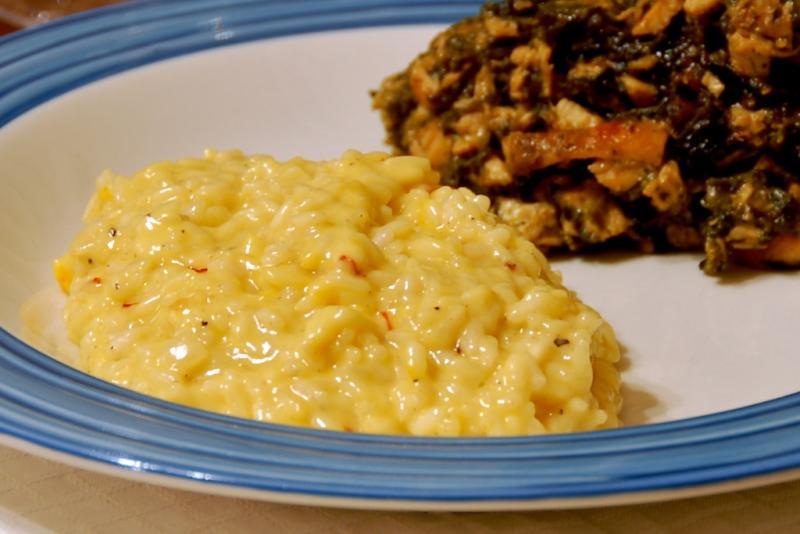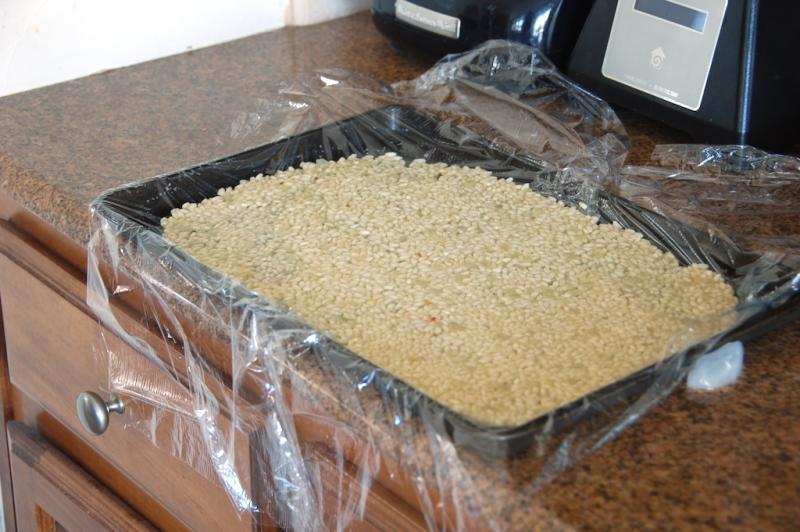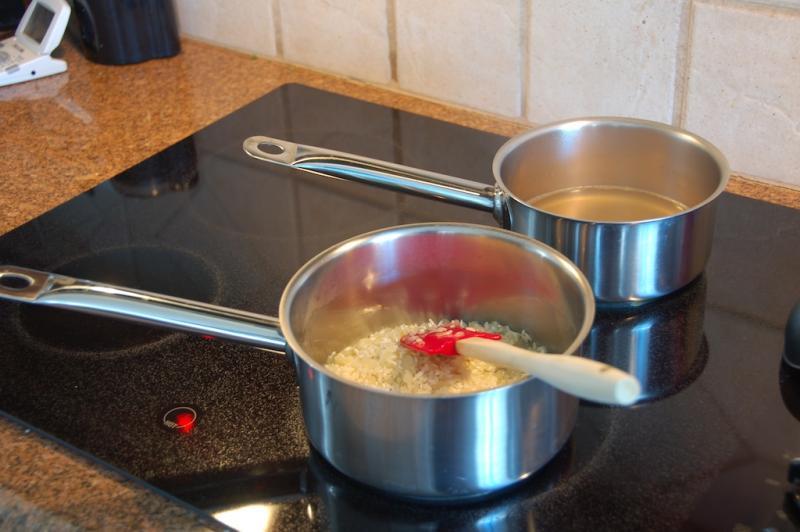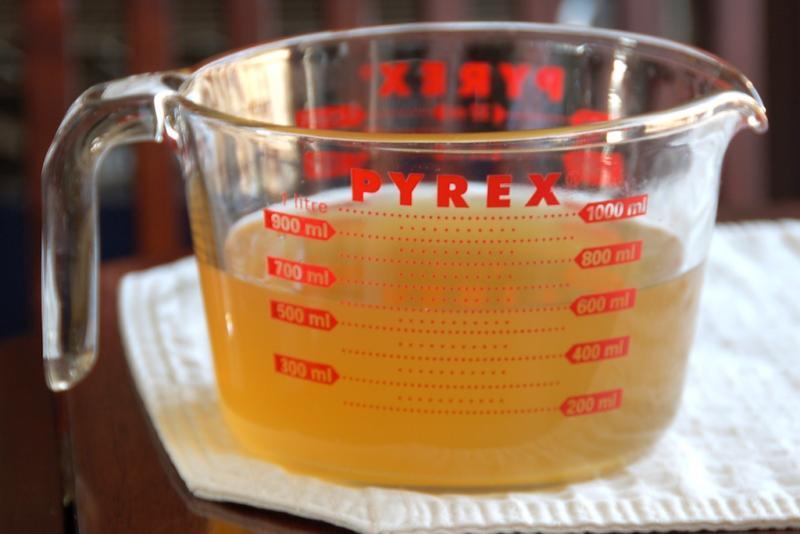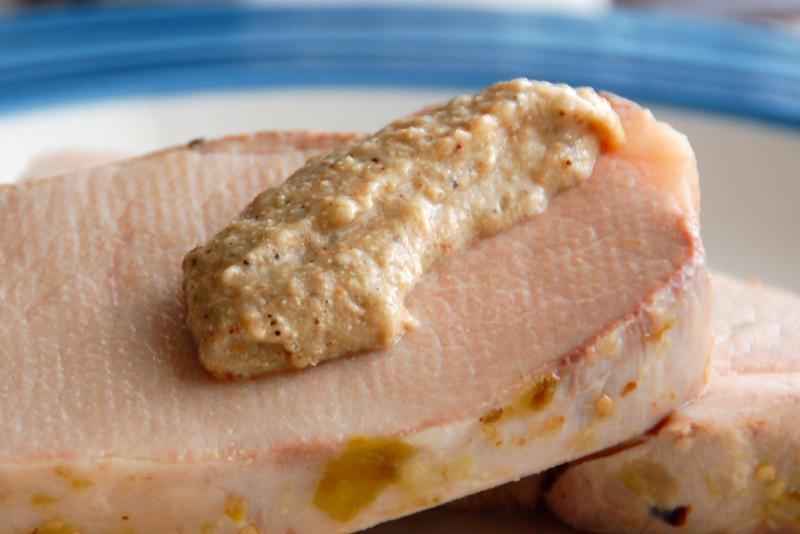-
Posts
10,190 -
Joined
-
Last visited
Content Type
Profiles
Forums
Store
Help Articles
Everything posted by Chris Hennes
-

"Modernist Cuisine" by Myhrvold, Young & Bilet (Part 2)
Chris Hennes replied to a topic in Cookbooks & References
I hope runwestierun and daves are right: that this is the beginning of something new. Maybe in 20 years we'll all be shaking our heads at how we used to use dozens of different "measuring cups" to measure ingredients. Why not just have one scale?! You mean people used to be scared to use xantham gum? Wow. Wait, they didn't measure the humidity in their ovens? How did they ever cook anything right?! -

"Modernist Cuisine" by Myhrvold, Young & Bilet (Part 2)
Chris Hennes replied to a topic in Cookbooks & References
Been reading Kuhn? -
OK, that is just plain awesome. Their roux is a bit light IMO, but obviously one can simply cook longer. And once you've got the timing down, it's just a science... thanks for that link, Kerry.
-
Yeah, the last step just has you cook it until it's done to your liking: I liked the texture.
-
Risotto Milanese (p. 3•306 and 6•153) This is one of the recipes from the book that requires no special equipment and no exotic ingredients (unless you count saffron as exotic). I used the vegetable stock I mentioned above, and it was great. The sweetness of that stock combined with the parmesan and the saffron turned this into the best risotto I've ever made (I admit that's not saying much, I've actually never made a risotto I liked. But I did like this one!) I must admit to omitting the gold leaf garnish, however.
-
Not that I can compete with Borgotti's, but what was the filling? This is a really interesting idea...
-
What was the texture of the pasta like on this? Did it stay soft, or get crispy, or what?
-
I just read this post at Skillet Doux and realized I have never heard of this before: he made a roux for his gumbo in the oven. Not the deal where you just toast the flour in the oven: the real kind, with oil. This is the first I've heard of it: any other experiences with the technique?
-
They don't recommend a particular brand, but Dave Arnold does, over at Cooking Issues.
-
It's cooked at their standard temp for vegetables: 85°C/185°F. But there is a 12 hour refrigeration step before the bag is opened and drained. I don't know how necessary that is, I have not read that part of the book yet.
-
Oops, didn't address your proportion question: The recipe lists precise proportions of the ingredients, and in their parametric tables for stocks the also give specific "best bets" ratios: of course, as with any stock recipe, you have to modify it to suit your particular use. So I don't know if I'd call that "strict"—at least no more so than any other recipe.
-
I'd say the stock is "normal" concentration, more or less what you would want to use as say, the basis for a broth that was not going to be much further reduced. It was very flavorful and rich, but not overwhelmingly so. I just used it to parcook a risotto for this evening's dinner, so I'll report on the flavor of that dish later tonight. There aren't any stocks based on legumes, they are all either protein, general vegetable, or specific vegetable. I'm looking through the broths as well, and I don't see anything quite right: they have things like a mushroom broth, and a "baked potato broth," but I'm not seeing anything quite like what you are looking for. Of course some of the techniques may transfer, but without testing there's no way to know for sure, that I see.
-

Recipes with lots of ingredients that produce a worthy result
Chris Hennes replied to a topic in Cooking
Mole, in Mexican cuisine, springs to mind: the key to a great mole is to get those 20-30 individual ingredients to harmonize, so that no single ingredient rises above the others. When done well, it's awesome. -

"Modernist Cuisine" by Myhrvold, Young & Bilet (Part 2)
Chris Hennes replied to a topic in Cookbooks & References
Not stupid: you are just going by your gut feelings, whereas Myhrvold and Co. have actually tested these things. The book goes into considerable detail on those assertions, actually showing the temperature plots and the like. With respect to steak cooking time: if you cook the steak four times as long at the same temperature you will incinerate the outside of the steak by the time the inside is done. It's the final core temperature that takes four times as long to reach. SO the solution, as anyone cooking a thick steak already intuitively knows, is to lower the temperature you're cooking it at. With respect to "shocking" vegetables: the point is that shocking doesn't stop the cooking process! While that was always assumed to be the case, careful measurements show that it's simply false: an old wives' tale, if you will. The core temperature reached is almost identical regardless of how fast you chill. -
Yes, in fact they have a fairly extensive table where they lay out their preferences for each type of stock (they list twelve types). Most of them the preference is pressure-cooking: only the fish, shellfish, vegetable, and Japanese stocks are listed as preferring sous vide.
-

"Modernist Cuisine" by Myhrvold, Young & Bilet (Part 2)
Chris Hennes replied to a topic in Cookbooks & References
I'd suggest heading over to the Cooking with "Modernist Cuisine", where many of us are, in fact, cooking from the book. Some of the recipes are complicated, and some are not. I will agree that all are "obsessive," however, in the sense that they are really focused on ways to get the "best" product X, Y or Z, cost or equipment limitations be damned. -
Sous Vide Vegetable Stock (pp. 2•303 and 6•13) I've never made stock sous vide before so I thought I'd give it a try with a vegetable stock first. I was amazed at how little water you add: only about 70% of the weight of the vegetables. I made the "white" version of this stock, which is to say, I didn't sauté the vegetables. The finished stock is excellent, practically drinkable: very well-balanced, though sweeter than I tend to make vegetable stock. I don't know if this is the result of the sous vide process or just the balance of ingredients. For me the big problem is that the amount of stock I can make at any one time is very small: the recipe as written makes on 600mL of finished stock, and my sous vide setup probably could at most make twice that. So something like a liter at a time, max.
-
Wow, most years I barely recognize any of the books, and this year I've cooked extensively from three of them! Unfortunately, not all in the same category, so I have no idea of their chances of winning. I really liked Bayless's Fiesta at Rick's a lot, though there were some editing issues. Greenspan's Around my French Table also had a number of really wonderful recipes in it. I personally felt that Young's Stir Frying to the Sky's Edge was not as good as her earlier efforts, but since I'm not familiar with the competition I don't know what her chances are.
-

"Modernist Cuisine" by Myhrvold, Young & Bilet (Part 2)
Chris Hennes replied to a topic in Cookbooks & References
I think the authors of MC took great relish in mocking that particular statement... -
Also: I'm scoping out the two different gellans the books call for, and am wondering if this is the sort of thing that stores forever, or if it's got a shelf life? Like the Activa, it is sold in absurdly large packages considering how much one generally needs for home-cooking-sized portions.
-
I've spent the last hour loading up my shopping cart there: no problems here.
-
Do you all find yourselves spooning these ingredients much? I actually deliberately went with narrow-mouth jars because I pour directly into a bowl on my gram scale, sort of tapping at the side of the jar to coax out the last little bit to hit the amount requested.
-
Anyone have a source for FMC Biopolymer brand Protanal Ester BV (propylene glycol alginate)?
-
You could buy this hilariously expensive set.
-
I don't think this is quite what you are looking for, but for lunch today I had some leftover pork loin with the Aromatic Alsatian Mustard from page 5•37. The mustard is interesting: I'm not sure what the target flavor is given that I have never had Alsatian mustard before, but in my case the vinegar, cinnamon, and cloves are pretty assertive, with the actual mustard less so. I'm not sure if this is intentional or if I blanched the seeds too long. I'd be interested to hear others' experiences with it.


